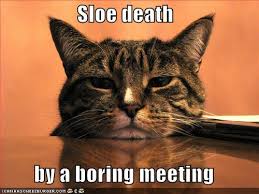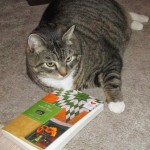 In the first part of April, I’ll be at a California Writer’s Conference. Of course, I’m excited to see old friends and meet new ones. But I’ll also be networking. Before I go, I must decide what I’ll be taking with me.
In the first part of April, I’ll be at a California Writer’s Conference. Of course, I’m excited to see old friends and meet new ones. But I’ll also be networking. Before I go, I must decide what I’ll be taking with me.
Writing Tip for Today: How much and what kind of manuscripts should I bring to a writer’s conference?
Great First Impressions
If this is your first conference, it’s important to follow the rules as well as to observe good etiquette. Remember, agents and editors are people too. Despite what you might read about writers who wow an editor or agent in the bathroom, it’s really not a good option. At best, you’ll come off as a newbie. At worst, you’ll be thought of as a pest or even avoided. Treat professionals with respect: Be on time to appointments, don’t monopolize conversation at dinner, show the editor or agent only manuscripts and topics they are seeking and avoid trying to extend your allotted time. Dress professionally, make eye contact and smile and more than anything, be prepared. If you follow the guidelines, you’ll have a better chance of making a great first impression.
Laptops, Tablets and Flash Drives, Oh My!
Many writers tote their laptops or tablets with them to conferences. Overall, this can be helpful—especially if you spot needed corrections or want to edit a manuscript. Other writers opt to bring flash drives (also called thumb drives) containing all their important files and manuscripts. Another option is to save work to the cloud (Google Drive, Icloud or Dropbox to name a few). If you choose to bring only a flash drive or use the cloud, prepare in advance the first chapters of your manuscript. Place first or first three chapters of your work into a new file, along with a brief synopsis or overview. This way, the editor or agent who requests a sample won’t have to wade through the entire manuscript and you won’t have to hurry to produce just that sample. And while we’re on the subject, if you’re a first-timer, be sure any novel or memoir is complete before you approach an agent or editor. This is a requirement you’ll find almost everywhere—that if you are unpublished (unproven), you must complete and polish your work before most in the publishing business will take a look. But go ahead and bring your tablet or laptop if you wish—you can take notes more easily and keep all your documents close at hand. Just be sure your device has a good battery, for many times, electrical outlets are hard to come by.
Paper Tigers?
At some point, conferees always ask, “Should I bring a hard copy of my work?” The myth of an editor being passed a book-length manuscript at a conference and then signing that writer is only that: a myth. Can you imagine the amount of paper an editor would need to schlep back to their desk if most conferees handed them a paper copy? If you want to print a copy and keep it in your car’s trunk or your suitcase, fine. But most editors and agents would rather you waited until after the conference, then send along what they’ve asked to see, with a brief reminder of the request. At one time, One Sheets were all the rage but I don’t hear about them now as much as I once did. A One Sheet contains a one-line summation of your book (a tag line), with a brief synopsis, info about the book’s genre, category and length and a brief author bio. Some of these got fancy, with photos and decorations, until they resembled an ad campaign. The point is, the info all fits on One Sheet. Check your conference for their advice on bringing One Sheets. I think your best bet on bringing paper is to hand out your professional business card at a conference, and to collect others’ cards as well. If you go to a conference this year, go with a positive but realistic attitude, a good working laptop or some way to access your files and paper copies if they make you feel more secure. See you in a couple weeks!




